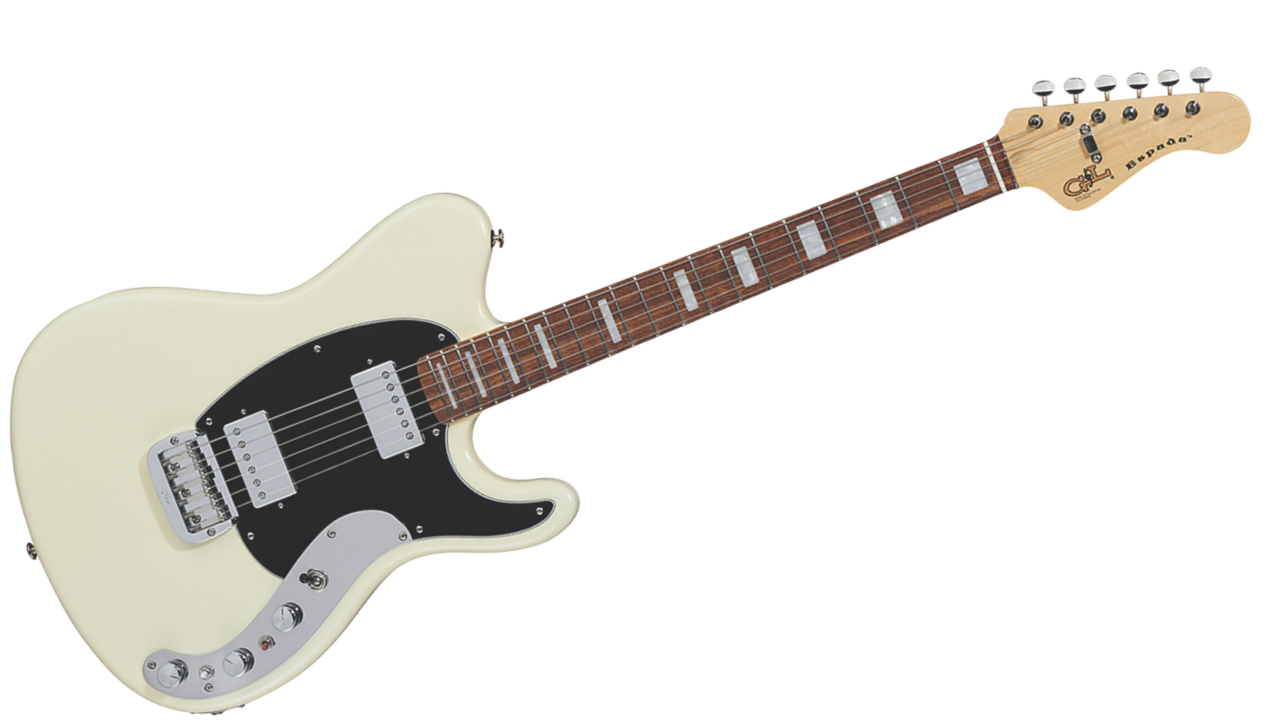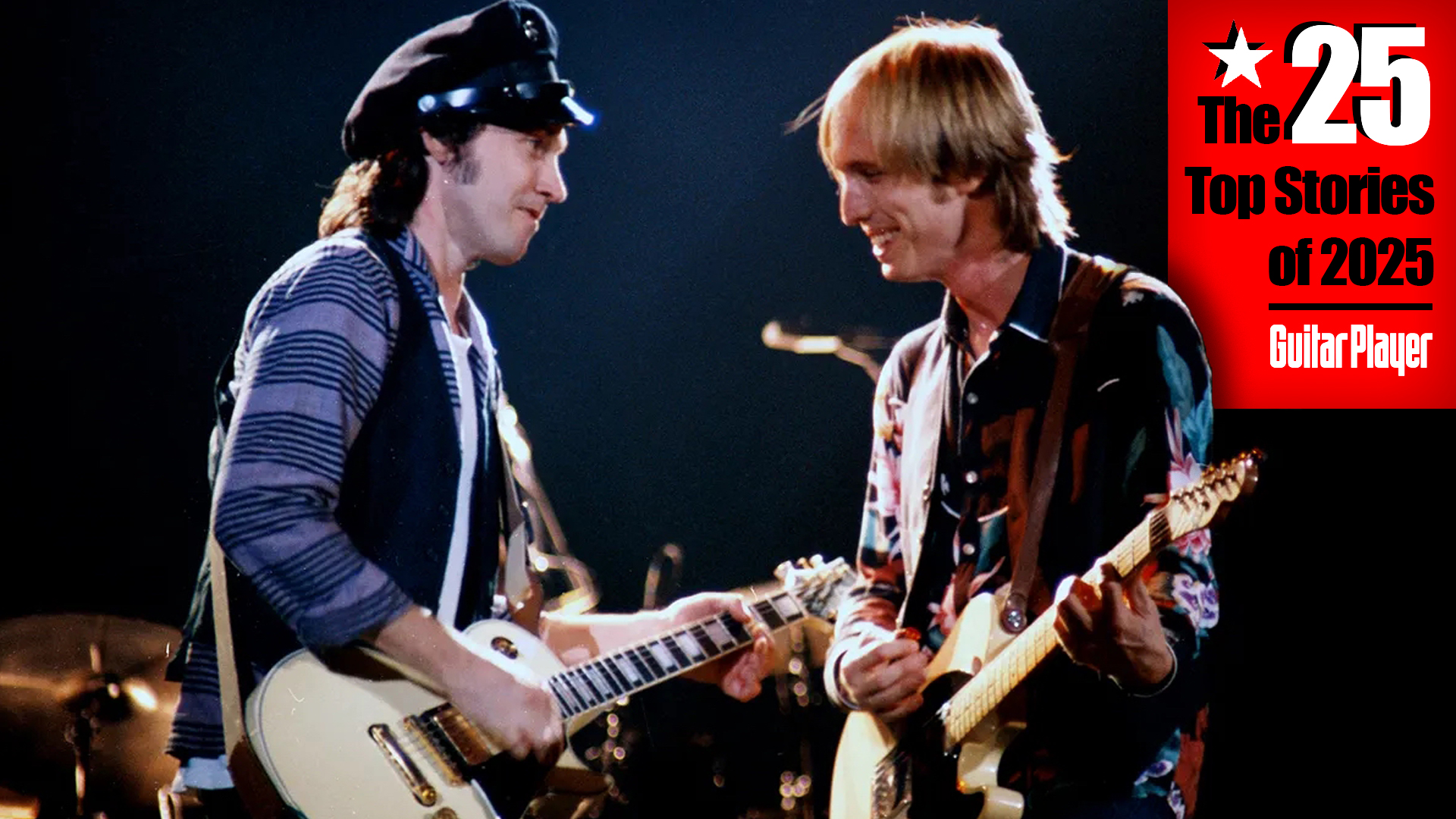“It was waiting patiently for decades, kind of like lost tapes from an artist”: The Espada HH and Espada HH Active are G&L’s latest “dual-humbucker” takes on Leo Fender’s gorgeous long lost late-1960’s blueprints
Leo Fender’s long-lost 1960's Estrada is back again for 2024 thanks to G&L in two new “dual-humbucker” variations on the 2019 model

Leo Fender spent roughly 20 years at the musical instrument company that bears his name. Perhaps it’s due to his storied history there that people often forget he spent another 20 years, from 1971 until his death in 1991, continuing to design guitars suited to the ever-changing needs of contemporary musicians.
In addition to Music Man, the company he co-founded in 1971, Leo spent much of his final years at G&L, the company he created in 1980 with his former Fender colleague George Fullerton.
Remarkably, one of G&L’s newest models comes from a design Leo drew up well before the company came into existence. After selling Fender Musical Instruments to CBS in 1965 and launching his consultancy for the company as part of his non-compete agreement, Leo formed CLF Research (for Clarence Leo Fender), an R&D operation into which he poured a ton of new thoughts about guitar design.
In 1969, he applied much of his latest thinking to a new model he called the Espada, after which he placed the blueprints and R&D materials in his desk drawer. And there they sat for years; his design would never come to fruition in his lifetime.
Decades later, the folks at G&L discovered the plans in Leo’s old workspace and recognized the opportunity they presented.
Released in 2019, the G&L Espada featured two split-coil Magnetic Field Design (MFD) pickups, an innovative hum-canceling single-coil unit designed by Leo himself and used on several G&L models since the inception of the brand.
Now come two new takes on this model: the Espada HH and Espada HH Active. One glance at these new variants reveals that the “HH” stands for dual-humbucker, a pickup complement intended to take the Espada into slightly different tonal territory.
All the latest guitar news, interviews, lessons, reviews, deals and more, direct to your inbox!

That aside, both models are very much as Leo sketched out his original design 54 years ago.
When asked his first thoughts upon discovering the lost design, G&L president Dave McLaren told Guitar Player, “I wondered how such a good-looking design didn’t get produced at some point. It could have been the last ‘Leo Fender’ Fender, or it could have been repurposed into a Music Man or a G&L here at the CLF Research factory on Fender Avenue.
“Obviously, there would have been technical changes, but the proportions of the body, the curves, the pickguard, the styling were all fantastic. It was waiting patiently for decades, kind of like lost tapes from an artist. It just takes someone else who’s well versed in the artist’s style to complete the song, applying some of the artist’s later musical development to make the song into a cohesive piece.”
Although it took some creative thought to bring the raw design to fruition, the G&L team saw a natural path from the blueprints to the final realization.
“The technical aspects of the design were being developed by Leo in 1967 and ’68, although nothing was ready for production,” McLaren explains. “The styling was fully developed by the end of 1969, and I think Leo’s intent was to have a completed Fender model ready for a 1970 launch, but the clock ran out on Leo’s consultancy with CBS/Fender and the project was abandoned.”

In any case, McLaren adds, the concept likely wasn’t well received at CBS, which was then focusing on growing and streamlining production at its big new factory.
The pieces were all there for G&L, however, and mainly required an update to the breadboard preamp design — Leo’s solution to overcome guitar-cable loading and deliver more clarity and better transients — and the use of a solid, sustain-enhancing bridge that had already become a G&L staple via another of the founder’s later designs.
The Espada’s body is clearly a descendant of Leo’s seminal Broadcaster and Esquire solidbody designs of 1950, but with more comfortably rounded edges and a rib cage– sparing belly contour.
The passive and active variations are available in two wood choices, alder and ash, with two finish options for each of those timbers. Our review samples include an alder-bodied Espada HH in Jet Black and an ash Espada HH Active in Cherryburst.
Thanks to identical ergonomics, both guitars are extremely comfortable on the lap. The rounded edges eliminate the Telecaster’s propensity to cut into a player’s ribcage and forearm — one factor that led to the Stratocaster’s contoured shape — and make for a more huggable playing experience.
The Espada HHs’ 25 ½–inch-scale necks are made from maple and feature unbound Caribbean rosewood fingerboards with pearloid block inlays. Carved to a medium-C profile, they sport a width of 1 5/8 inches across the nut and are attached with four wood screws rather than the three-screw plate and micro-tilt adjustment Leo Fender pioneered in the earlier days of G&L.
Vintage-style Kluson Deluxe tuners with slotted SafeTi-Posts grace the six-a-side headstock, while Leo’s own seminal G&L Saddle Lock hardtail bridge anchors things firmly down at the body end.

The ostensibly Gibson-style, full-size humbuckers are a departure from the circa-’69 Espada design, comprising a G&L AS4255Z and AW4370Z with uncovered zebra coils in the passive model and an AS4255C and AW4368C with chrome covers in the active, all made with alnico magnets.
Meanwhile, the rest of the electronics and control section retain hefty portions of Leo’s design DNA.
The preamp in the active version was part of the intention of the original Espada concept, although here it’s G&L’s existing Micro-Preamp fed by a single nine-volt battery rather than the six AA cells of Leo’s design.
That model includes a three-way toggle switch for selecting passive/ active/active-bright modes (replaced by a two-way kill switch in the passive Espada HH), and both guitars have a second mini-toggle for coil splitting.
Each guitar also includes a three-way pickup selector positioned toward the front of the scimitar-like control plate.
Rather than one of the configurations more commonly found today, the three knobs deliver volume plus Leo’s Passive Treble and Bass (PTB) circuit, allowing more interactive EQ sculpting than traditional high-pass tone knobs provide.

Both guitars had good setups right out of the gig bags, along with the easy playability G&L is known for. I tested them through a 65amps London head and 2x12 cab, and a tweed Deluxe-style 1x12 combo, using a selection of pedals, and both guitars revealed a versatile character that could easily suit a wide range of gigging needs.
The passive mode of each can lean a little to the warm and rich side of the sonic spectrum and be a tad boomy with the neck humbucker selected alone. But turn the bass control down 30 percent while leaving the treble up full, and the rhythm position exhibits more bite and clarity.
From there, the balance between the two is simply outstanding, and a twist of a knob or a flick of a switch takes you from clear and jangly to gutsy, thick and rocking.
The active and active-bright settings on the Espada HH Active are well specified, as the latter never sounds too bright even with the pickups in single-coil mode and the treble control up full. Instead, it adds extra sparkle and bite that really helps the Espada HH Active come alive.
As such, this model delivers an enticing blend of classic and modern, and proves itself incredibly versatile. Ultimately, these two new models offer performances very close to a something-for-everyone package. The fact that it all stems from one of the last of Leo’s original Fender designs sure makes for an enticing back story.

For more information contact G&L Guitars
Dave Hunter is a writer and consulting editor for Guitar Player magazine. His prolific output as author includes Fender 75 Years, The Guitar Amp Handbook, The British Amp Invasion, Ultimate Star Guitars, Guitar Effects Pedals, The Guitar Pickup Handbook, The Fender Telecaster and several other titles. Hunter is a former editor of The Guitar Magazine (UK), and a contributor to Vintage Guitar, Premier Guitar, The Connoisseur and other publications. A contributing essayist to the United States Library of Congress National Recording Preservation Board’s Permanent Archive, he lives in Kittery, ME, with his wife and their two children and fronts the bands A Different Engine and The Stereo Field.

